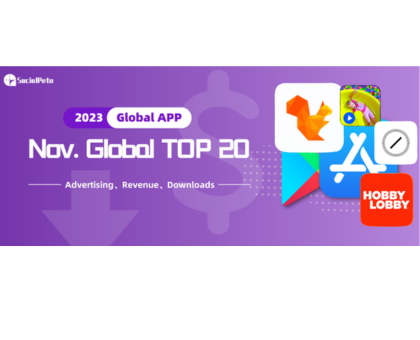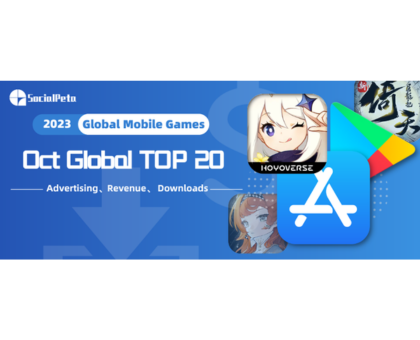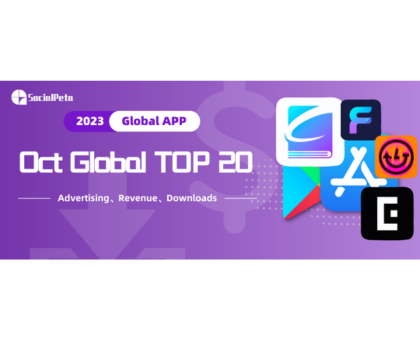Revolutionising Gaming: AI-Driven User Acquisition and Targeting

The gaming industry has grown exponentially in recent years, with mobile gaming leading the change. The widespread use of smartphones and the availability of diverse, high-quality games are the best examples of this trend.
However, the increasingly competitive nature of the market makes it challenging for developers to attract and retain players. Effective user acquisition (UA) and targeting strategies are essential for success, yet traditional methods often fail to keep pace with market dynamics. This is where artificial intelligence (AI) steps in, transforming how UA and targeting are approached.
In this post, we will delve into what UA is, how you can implement AI to take your strategy to the next level, and the benefits it can deliver.
What is User Acquisition (and Why Does It Matter)?
User acquisition is all about getting people to discover, download, and use your app. It is crucial for app growth and monetisation, therefore it is key to have an effective strategy that ensures your app stays relevant in this highly competitive market, while at the same time forging lasting relationships with your users.
UA is a continuous process that could be divided into the following steps:
- Awareness: First, you must make sure people know your app exists. This can be done through advertisement, online campaigns, partnerships with influencers, or media coverage. The goal is to put your app in front of as many potential users as possible.
- Attraction: Once people know about your app, you need to make them interested in it, whether that is through showcasing the unique features it has, its attractive design, or how useful it can be. In this stage, it is important to cater the content to your targeted audience.
- Conversion: Now that people are interested, you need them to download and install your app. To achieve relevant conversions, you should make the installation process smooth and simple. Levelling up your App Store Optimisation (ASO) is also of utmost importance in this step.
- Engagement: The main goal of UA is not to simply attract users, but to keep them engaged with your app for a long time. There are several strategies – like push notifications, or creating new and fresh content frequently – that can strengthen the rapport with your audience.
- Retention and Loyalty: Tightly related to the previous point, you want to make sure users stick around and use your app regularly. To build loyalty, you can rely on practices like offering in-app rewards, personalised content, or creating a community around your app.
All in all, UA drives app growth and revenue, expanding your user base, increasing engagement, and improving your market position. Not only that, but an effective UA approach also helps target high-value users, optimises marketing spend, and maximises return on investment (ROI).
If you want to have a successful and sustainable app, you need to pay attention to your UA strategy, but also to how you perform your targeting. Targeting refers to the practice of identifying and reaching the most relevant potential users, and it involves analysing demographic data, user behaviour, interests, and other criteria to focus marketing efforts on those individuals who are most likely to download and use the app.
Effective targeting ensures that marketing resources are used efficiently, attracting high-quality users who are more likely to engage with the app, remain active, and contribute to its revenue.
Traditional Approaches in UA & Targeting
Traditionally, user acquisition has relied on manual techniques that are both time-consuming and not 100% trustworthy. Common manual methods include social media campaigns, influencer partnerships, App Store Optimisation (ASO), Organic Mobile User Acquisition, and other types of marketing.
While these methods can have some success, they often lack precision, resulting in high user acquisition costs and low retention rates. Moreover, having to manually tweak them results in a significant loss of time and takes energy away that could be put into other projects.
Targeting methods have been similarly broad, based on basic demographic and personal data. Traditional targeting tends to box users into homogeneous segments, assuming average characteristics. As a result, the focus is put exclusively on one user category, ignoring the others and the more than likely intersections that can happen between segments.
This approach often leads to mismatched marketing efforts and poor user engagement, since decisions are based on limited data and general trends rather than specific user behaviours, making it difficult to achieve high levels of personalisation and effectiveness.
Here is where AI comes in handy, as it can manage the handling of very granular data, allowing you to tailor your UA and targeting strategies to specific users.
Pros of Implementing AI-Based UA Strategy
Relying on AI-based UA strategies offers several advantages over traditional methods:
- Enhanced User Engagement and Retention: AI excels in analysing real-time user behaviours to deliver highly personalised marketing messages. This personalisation enhances the user experience, leading to higher engagement and retention rates. Players receive content that is relevant to their interests, keeping them invested in the game.
- Data-Driven Decision Making: AI platforms, like Gamelight, provide actionable insights derived from extensive data analysis. These insights help developers understand user preferences and behaviours, enabling informed decision-making and continuous optimisation of marketing strategies. This data-driven approach ensures campaigns are effective and aligned with user interests.
- Scalability and Adaptability: The gaming market is dynamic, with trends and user preferences constantly evolving. AI systems are designed to adapt to these changes by continuously learning from new data. This adaptability guarantees that marketing campaigns remain relevant and effective, even as the market evolves.
- Cost-Effective User Acquisition: AI optimises ad spend by focusing on users who are likely to install the game and engage with it long-term. This approach lowers acquisition costs and maximises ROI, ensuring marketing efforts are both efficient and effective.
- Precision Targeting: AI algorithms analyse vast amounts of user data to identify specific audience segments most likely to engage with a game. This precision targeting reduces waste and increases the likelihood of attracting high-quality users.
How to Implement an AI-Based UA Strategy
If after reading this article you’re thinking about implementing an AI-based UA strategy, here are some practical tips:
- Start with Clear Objectives: Define your goals clearly, such as increasing user acquisition, enhancing engagement, or improving retention rates. Clear objectives will guide your AI strategy and help measure its success. However, there are platforms like Gamelight which will allow you to optimise all of these aspects at once – so no need to pick and choose.
- Invest in the Right Tools: Choose AI platforms that offer comprehensive data analysis and actionable insights. Also, ensure that the tools you select can scale and adapt to market changes.
- Leverage User Data: Collect and analyse user data to understand preferences and behaviours. These insights can be used to personalise marketing messages and campaigns. In relation to this, make sure that your app can access as many details about users and their behaviour as possible, since the more data AI can access, the more maximised its performance.
- Continuously Monitor and Optimise: Regularly review the performance of your AI-driven campaigns. Use the data to refine and optimise your strategies continuously.
- Stay Adaptable: Be prepared to adjust your approach based on new trends and user feedback. AI’s strength lies in its ability to learn and adapt, so make the most of this capability.
Practical Example: How Gamelight Uses AI
Gamelight’s AI-powered platform is a prime example of how AI can enhance UA and targeting strategies. The platform continuously analyses user behaviour to refine and personalise game recommendations, significantly enhancing user engagement and retention rates.
Gamelight’s platform creates detailed user profiles by integrating demographic data, app usage data, and behavioural patterns. These profiles help in identifying potential high-value users and tailoring marketing strategies accordingly.
The AI’s self-learning capability ensures that it optimises performance by constantly refining its recommendations and targeting methods. This adaptability allows Gamelight to maintain high engagement levels and positive in-game behaviour among users.
Additionally, Gamelight’s AI-powered approach ensures that marketing campaigns scale effectively, with initial results showing rapid improvements and sustained performance without the typical decline seen in other UA strategies.
Final thoughts
The integration of AI in UA and targeting strategies marks a significant advancement for the gaming industry. By enhancing user engagement, enabling data-driven decision-making, and ensuring scalability and adaptability, AI offers a robust solution to the challenges faced by developers.
AI can be effectively utilised to stay ahead in a competitive market. As the gaming industry continues to evolve, AI-based UA strategies will undoubtedly become a cornerstone of successful game development and marketing, providing developers with the tools they need to attract, engage, and retain players effectively.





